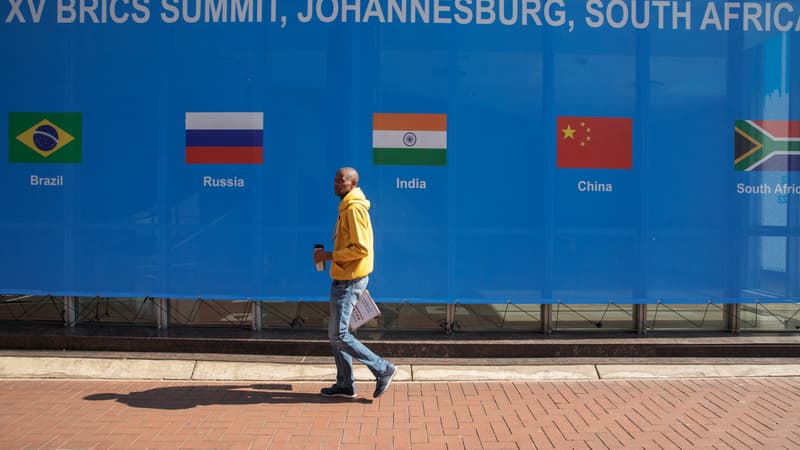“It’s no longer the developed world and the developing world. It’s an uphill world and a downhill world.” The sentence pronounced last March by journalist George Mack on Twitter made a big noise.
Because it is in 2022 when the curves between the G7, the club of the 7 most industrialized countries on the planet (Germany, Canada, the United States, France, Italy, Japan and the United Kingdom) and the emerging BRICS countries that group Brazil, intersect. Russia, India, China and South Africa.
This last group, according to data from the British institute Acorn Macro Consulting, already weighs 31.5% of world GDP in purchasing power parity when the G7 represents “only” 30.7% of the wealth created on the planet. In the early 1990s, the group of former industrial champions still accounted for 45% of the world’s wealth, three times more than the Brics who barely exceeded 15%.
And the gap should continue to widen. The relative weight of the G7 should, according to Acorn, continue to decline and fall well below 30% by the end of the decade, while that of the Brics should, according to these same forecasts, approach 35%.
Invented in 2001 by Goldman Sachs, the term Brics was initially the informal qualifier given to fast-growing emerging economies. But since 2009, countries have decided to structure themselves and meet in annual summits like the one that begins Tuesday in Johannesburg, South Africa, in order to counter US power on the world stage.
This “club of five” promotes recognition of a multipolar global economic and political balance, breaking with legacy post-World War II organizations such as the World Bank and IMF. The medium-term objective of these countries, which account for 18% of world trade, is already to do without dollars in their trade.
Critical of the predominance of the greenback in international trade, one of their topics of reflection revolves around the way to get rid of the dollar. Brazil and China concluded a bilateral agreement at the beginning of the year to settle their trade in their local currencies.
a real attraction
An autonomy that these new powers want to acquire by operating the levers of soft power, that is, influence on the international scene. The Brics thus announced last month their desire to create their own international ranking of universities, during a summit of education ministers in South Africa. Moscow believes in particular that Russian universities are excluded from certain international rankings for political reasons.
The appeal of these young powerhouses is already established. Twenty countries have already applied to join the BRICS, whose economic growth is mainly driven by China and India, and just as many have expressed interest, Pretoria reported last month.
Iran, Argentina, Bangladesh and Saudi Arabia are among the contenders. One of the pull factors is, in particular, the creation by the Brics of a New Development Bank (NDB) whose ambition is to offer an alternative to the World Bank and the IMF. The Shanghai-based structure has invested $30 billion since its inception in 2015, in infrastructure and sustainable development projects in member states and developing economies.
If the economic power of the Brics is real, there is still a long way to go before taking the place of the G7 in the world. In the first place, because the strength of these economies is above all demographic, with a total population of 3.2 billion inhabitants. GDP per capita is on average $8,000 within these countries in 2022 when it approaches $50,000 within the G7. The middle class of these emerging economies is still much less wealthy than that of Western countries. The Bric are also primarily dependent on Western populations to sell their products.
Significant political differences
The power of the Brics is also closely linked to the rapid growth of the Asian economies. Since 2013, growth in Brazil, South Africa and Russia has averaged 1%, a slower pace than the G7 economies. Only China and India today deserve the qualification of fast growing countries with an average of 6% in the last decade.
Furthermore, the political differences within the Brics are much greater than within the western club. The G7 powers are all liberal democracies united for the most part within military organizations like NATO. If there can be trade rivalries between the United States and the European Union, for example, on the Brics side the regimes are much more heterogeneous and interests diverge.
Between Indian democracy, the Russian autocracy banished from the international community since the Ukraine war or even the Chinese regime without political freedom, the Brics avoid political issues when they meet and have no other model to offer than economic development.
Source: BFM TV


